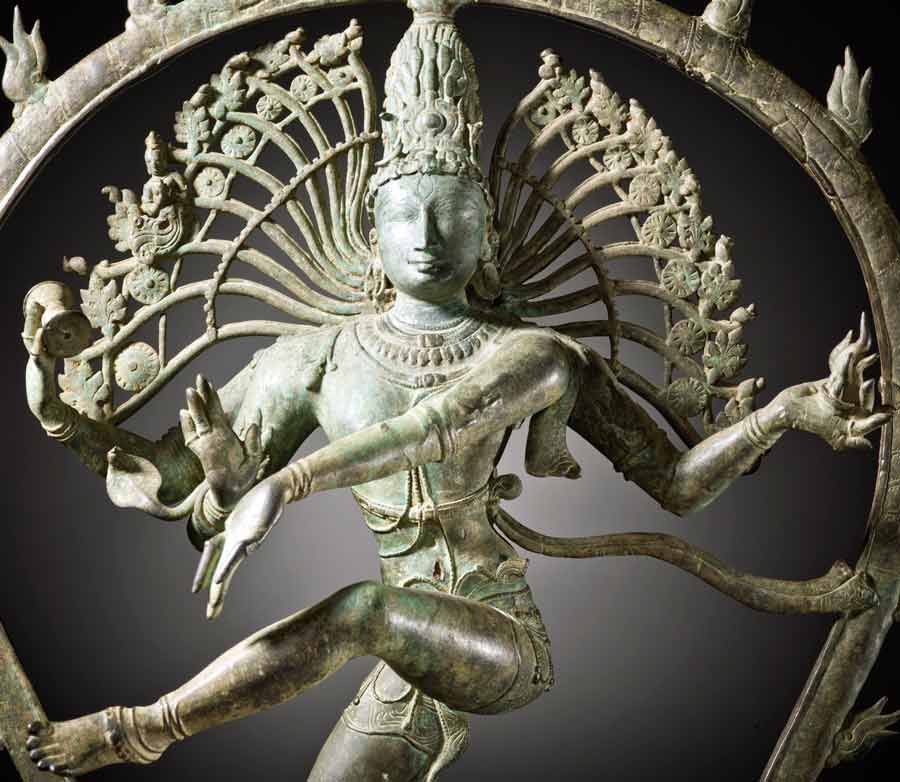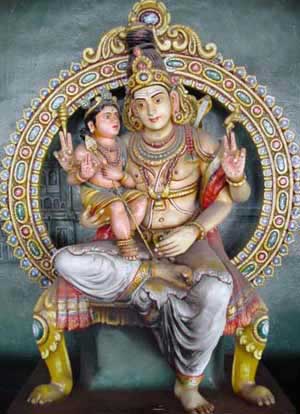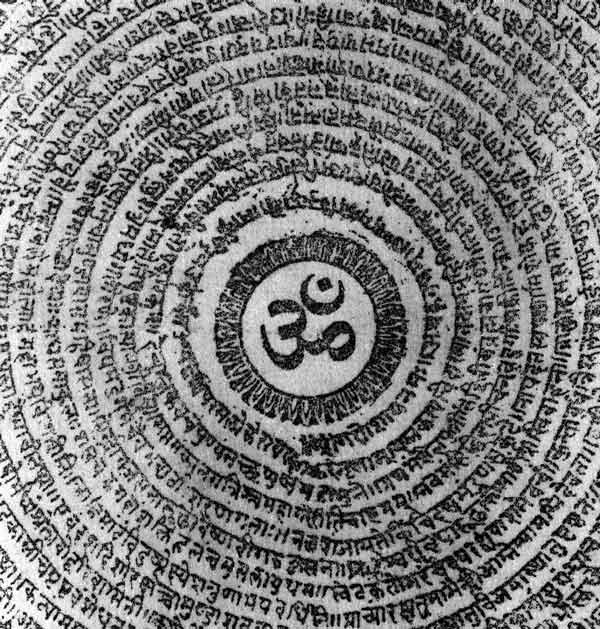
Shiva as the Lord of Dance, LACMA
Editor's Note: Dr. Miller has translated several classical Indian texts from Sanskrit into English. This is the fifth part of Richard's translation of Patanjali's Yoga Sutras, along with his rich insights and incisive commentary.
Read Previous Chapters:
I. 23-29
Īśvara & OM
In these seven sutras, Patañjali advocates the two means of 1) effortless surrender and 2) the use of sound for stabilizing and turning attention away
from objective, ever-changing, and distracting objects towards contemplating and realizing non-objective unchanging Essential Nature.
How is surrender helpful in realizing Essential Nature?
I. 23. īśvara - praṇidhānād - vā
īśvara: essential nature with attributes
praṇidhānād: self-surrender; renunciation of the fruits of one’s actions
vā: or
Yoga is when, through effortless surrender of the ego-I principle and relinquishment of identification with thoughts, Essential Nature is revealed.
Relinquishing identification from thoughts, and especially the ego-I thought, is not brought about through sheer force of will, but rather through
effortless surrendering one’s personal will to the will of Essential Nature. Here, a shift occurs within from feeling, “I’m living life” to realizing
that “life is living me”.

Lord Shiva and His son Lord Murugan appear as the student
and the teacher of Pranava respectively, by R.K.K. Rajarajan
What is this great force called īśvara?
I. 24. kleśa - karma - vipāka - āśayaiḥ - aparāmṛṣṭaḥ - puruṣaviśeṣa īśvaraḥ
kleśa: affliction; misery
karma: action as a result of prior conditioning
vipāka: fruition
āśayaiḥ: seed impressions of desires
aparāmṛṣṭaḥ: untouched
puruṣa: Essential Nature
viśeṣaḥ: special; particular
puruṣaviśeṣaḥ: distinct manifestation of Essential Nature
īśvara: Essential Nature with attributes
Essential Nature
is incapable of being touched, tainted, or corrupted by personal actions or conditioning, which otherwise cause misery and suffering for those who are identified with these conditioned actions of the body, mind and senses.
Essential Nature is always present and unchanging, and is here before, during, and after all changing manifestation of body, mind, senses, and world. It
can be discerned by contrasting what is changing, with what is always present and unchanging.
How can Essential Nature be so extraordinary?
I. 25. tatra - niratiśayaṁ - sarvajṇabījaṁ
tatra: there
niratiśayaṁ: unsurpassed
sarvajṇabījaṁ: beyond limitation; everywhere
Essential Nature
is beyond personal limitation and conditioning. All sense of self-limitation dissolves upon transcending identification with thought and
the ego-I principle, which otherwise obscure unconditioned Essential Nature through identification with the conditional manifestations of the body, mind, senses, and world.
The manifestations of nature, including the body, mind and sensory perceptions, go through five rites of passage: birth, growth, stability, decay, and
death. On the other hand, Essential Nature is unborn, unconditioned, and unchanging, and is untouched by birth and death.
How long has Essential Nature existed?
I. 26. sa eṣa - pūrveṣāmapi - guruḥ - kālenānavacchedāt
sa eṣa: that
pūrveṣam: the ancient's teacher
api: even
guruḥ: spiritual mentor
kālena: time
anavacchedāt: beyond cause/effect; unconditioned
Essential Nature is the source of inspiration and enlightenment of all the sages from beginningless time, for it has always existed.
Essential Nature has been the teacher of all teachers for it is unconditioned and exists outside of time, space, and limitation. It is the source of all
knowledge; the teacher behind all teachers. It is the voice of pure Stillness, beyond action and inaction, beyond sound and silence.

Om
How does one refer to Essential Nature?
I. 27. tasya - vācakaḥ - praṇavaḥ
tasya: its
vācakaḥ: designator
praṇavaḥ: symbol of supreme sound
Essential Nature may be verbally alluded to as the sound, OM.
OM (A-U-M) is a sound that is ever new, always fresh, yet always the same. It is the sound that can be heard in all natural phenomena, from the sound of
the ocean, wind, an engine or the ringing of the inner ear. The sound OM arises, unfolds, and dissolves within unchanging Essential Nature, and is
therefore an exquisite and direct pointer to Essential Nature. It can be used to draw attention away from identification with thoughts, so that attention
can then be turned into realizing Essential Nature.
How does one utilize OM in service of realizing Essential Nature?
I. 28. tajjapaḥ - tadarthabhāvanaṁ
tajjapaḥ: constant repetition
tadartha: its meaning
bhāvanaṁ: mentally dwelling upon
By constantly repeating the sound, OM, while also turning attention to realizing Essential Nature, is the right use of OM.
While sound, such as OM, is an objective arising, it can serve as a direct pointer to non-objective Essential Nature, within which it arises. It is because
of this contrast, that OM can reveal Essential Nature.
There must be a deep yearning to realize Essential Nature. Just as a lover deeply desires to find his/her beloved, the yogi must deeply yearn with every
breath to transcend all barriers that keep him/her separate from realizing Essential Nature. This 24/7/365 yearning is what ultimately brings us home to
Self-Realization.

Mount Kailash, Manasarovar
What happens when a person surrenders to Essential Nature?
I. 29. tataḥ - pratyakcetanādhigamaḥ - api - antarāyābhāvaśca
tataḥ: from this practice
pratyak: in-turned
cetana: consciousness
adhigamaḥ: attainment
api: in addition to
antarāya: obstacle
abhāvaḥ: absence
ca: and
When one experiences Om in this manner, attention, which is otherwise turned towards the ever-changing objects of body, senses, mind, and
world, is turned inward. Inquiry into Essential Nature, in which OM arises, effortlessly dispels all obstacles or distractions
without one having to struggle with them.
The mind’s tendency to remain identified with the ever-changing objects of the body, mind, senses, and world is gradually replaced with the tendency for
attention to turn effortlessly towards realizing unchanging Essential Nature.